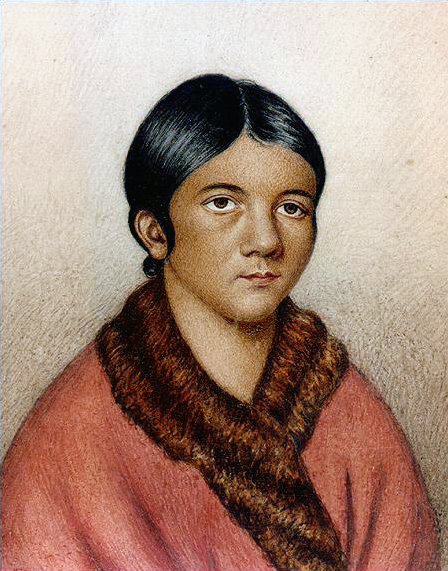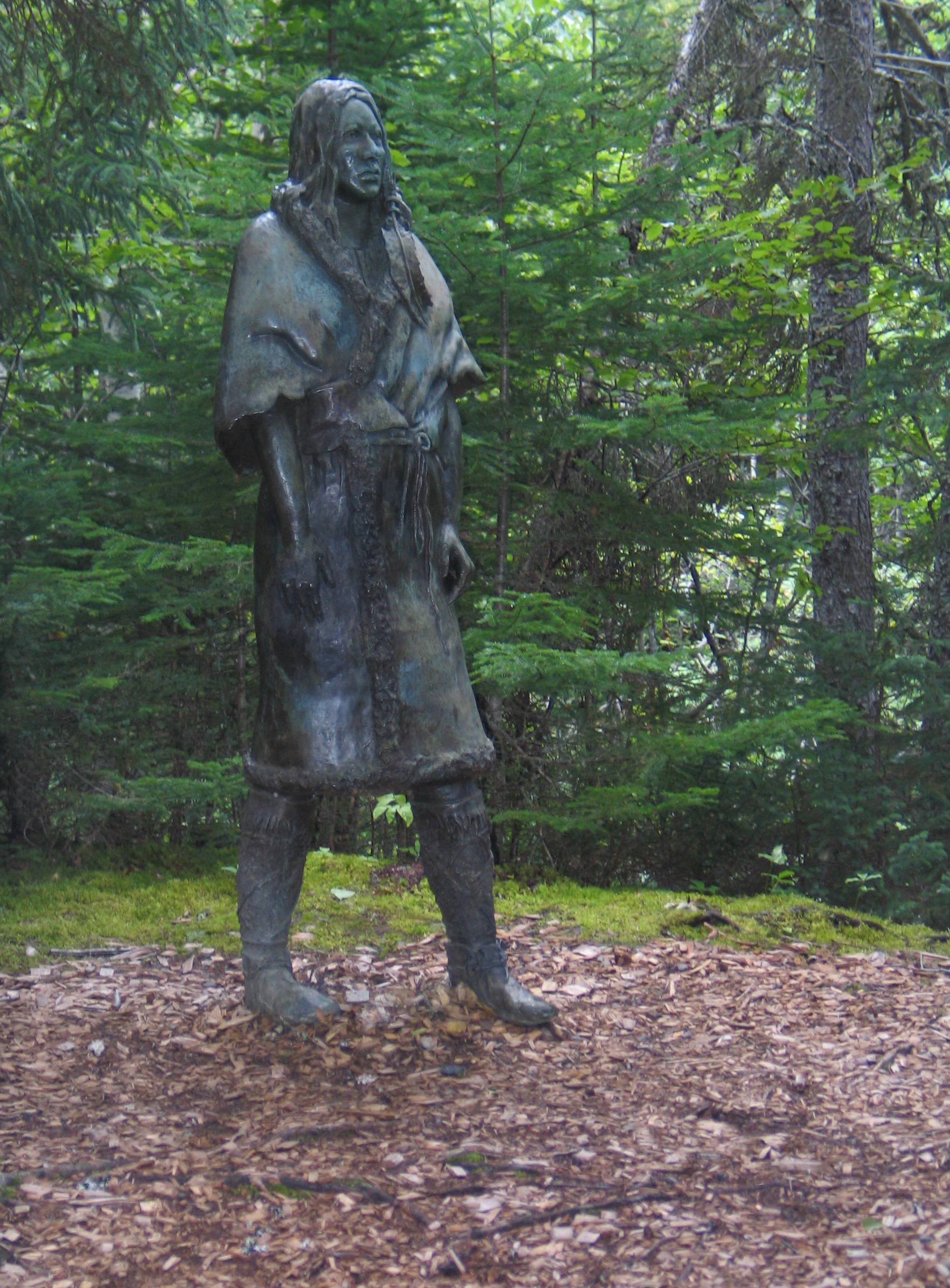
Information to change the world | |
Find Topics, Titles, Names related to your query |

Information to change the world | |
Find Topics, Titles, Names related to your query |
|
|
Shanawdithit
Early life with the Beothuk Shanawdithit was born near a large lake on the island of Newfoundland in about 1801. At the time the Beothuk population was dwindling, their traditional way of life becoming increasingly unsustainable in the face of encroaching European colonial settlements and infectious diseases from Europe such as smallpox against which they had little or no immunity. The Beothuks were also slowly being cut off from the sea, one of their food sources. Beothuks had long avoided European settlers; trappers and furriers regarded the Beothuks as thieves and would sometimes attack them. As a child, Shanawdithit was shot by a white trapper while washing venison in a river. She suffered from the injury for some time, but recovered. In 1819, Shanawdithit’s aunt Demasduit was captured by a party of settlers led by John Peyton Jr. and the few remaining Beothuks fled. In the spring of 1823, Shanawdithit lost her father, who died after falling through ice. Most of her extended family had already died from a combination of starvation, illness, exposure and attacks from European settlers. In April 1823 Shanawdithit, along with her mother, Doodebewshet, and her sister, whose Beothuk name is unknown, encountered trappers while searching for food in the Badger Bay area. William Cull and the three women were taken to St. John’s, where Shanawdithit’s mother and sister died of tuberculosis. 
Later life in the Newfoundland Colony The settlers in the Newfoundland Colony renamed Shanawdithit “Nancy April” after the month in which she was captured, taking her to Exploits Island where she worked as a servant in the Peyton household and learned some English. The colonial government hoped she would become a bridge to her people, but she refused to leave with any expedition, saying the Beothuks would kill anyone who had been with the Europeans, as a kind of religious sacrifice and redemption for those who had been killed. In September 1828, Shanawdithit was relocated to St. John’s to live in the household of William Eppes Cormack, the founder of the Beothuk Institution. A Scottish emigrant, Newfoundland entrepreneur and philanthropist, he recorded much of what Shanawdithit told him about her people and added notes to her drawings. Shanawdithit stayed in Cormack’s care until early 1829 when he left Newfoundland. Cormack returned to Great Britain where he stayed for some time in Liverpool with John McGregor, a Scotsman whom he had known in Canada, sharing many of his materials on the Beothuks. Following Cormack’s departure, Shanawdithit was cared for by the attorney general, James Simms. She spent the last nine months of her life at his home, having been in frail health for a number of years. William Carson tended her, but in 1829 Shanawdithit died in a St. John’s hospital after her long fight with tuberculosis. In addition to an obituary announcement in a local St. John’s newspaper on June 12, 1829, the death of Shanawdithit was reported in the London Times on September 14, 1829. The announcement noted that Shanawdithit “exhibited extraordinary strong natural talents” and identified the Beothuk as “an anomaly in the history of man” for not establishing or maintaining relationships with European settlers or other Indigenous peoples. Following her death Following Shanawdithit’s death Carson performed a postmortem and noted peculiarities with the parietal bone of the skull, eventually sending it to Royal College of Physicians in London for study. Shanawdithit’s remains were buried in the graveyard of St. Mary the Virgin Church on the south side of St. John’s. In 1938, the Royal College of Physicians gave her skull to the Royal College of Surgeons. It was lost in the German Blitz bombing of London in World War II. Meanwhile, in 1903, the church graveyard had been lost to railway construction. The church was torn down in 1963. A monument on the site reads: This monument marks the site of the Parish Church of St. Mary the Virgin during the period 1859–1963. Fishermen and sailors from many ports found a spiritual haven within its hallowed walls. Near this spot is the burying place of Nancy Shanawdithit, very probably the last of the Beothuks, who died on June 6, 1829. Legacy Shanawdithit played a vital role in documenting what little is known about the Beothuk people. Researcher Ingeborg Marshall has argued that a valid understanding of Beothuk history and culture is directly impacted by how and by whom historical records were created, pointing to the ethnocentric nature of European accounts which positioned native populations as inherently inferior. She notes that without Shanawdithit’s accounts of her nation’s later life, the Beothuk voice is nearly absent from historical accounts. Shanawdithit was recognized as a National Historic Person in 2000. The announcement coincided with the installation of a statue depicting Shanawdithit by Gerald Squires, titled The Spirit of the Beothuk, at the Beothuk Interpretation Centre near Boyd’s Cove. In 2007 a plaque commemorating her life was unveiled at St. John’s Bannerman Park acknowledging her contributions to the historical accounts of encounters between the Beothuk and European settlers, and the apprehension of her aunt, Demasduit, by John Peyton Jr. Shanawdithit is widely known among Newfoundlanders. In 1999, The Telegram readers voted her the most notable aboriginal person of the past 1,000 years. She had 57% of the votes. 
Statue of Beothuk woman, inspired by Shawnadithit, References Ivan Semeniuk (October 13, 2017). "DNA deepens mystery of lost Beothuk people in Newfoundland". Globe and Mail. p. A1. Forster, Merna (2004). "A Canadian Tragedy: Shanawdithit ca. 1801-1829". 100 Canadian heroines: famous and forgotten faces. Toronto: Dundurn Group. ISBN 9781550025149. "Disappearance of the Beothuk". Heritage Newfoundland & Labrador. July 2013. Marshall, Ingeborg C. L. (2006). "Shanawdithit, or Nance, Nancy April". In Hallowell, Gerald (ed.). The Oxford companion to Canadian history. Oxford: Oxford Univ. Press. ISBN 9780195415599. Anonymous (James McGregor), "Shaa-naan-dithit, or The Last of The Boëothics", Fraser's Magazine for Town and Country, Vol. XIII, No LXXV (March 1836): 316-323 (Rpt. Toronto: Canadiana House, 1969), Memorial University of Labrador & Newfoundland Website. Pastore, Ralph T.; Story, G. M. (1987). "Shanawdithit". Dictionary of Canadian Biography Volume VI (1821-1835). University of Toronto/Université Laval. Howley, James Patrick (1915). The Beothucks or Red Indians : the aboriginal inhabitants of Newfoundland. Cambridge: University Press. Marshall, Ingeborg (1998). A history and ethnography of the Beothuk. Montreal: McGill-Queen's University Press. ISBN 9780773517745. "Biography: Shanawdithit". Discovery Collegiate High School Bonavista, Newfoundland. K-12 school Web pages in Newfoundland and Labrador. "Shanawdithit National Historic Person". Park Canada. Gibbs, Graham (2016). Five Ages of Canada: A History From Our First Peoples to Confederation. FriesenPress. pp. 33-34. ISBN 9781460283110. "Muse for Gerald Squires sculpture mourns artist's passing". CBC News. 6 October 2015. "Last of Beothuk honoured in new monument". CBC News. Subject Headings
Aboriginal History |
Connect with Connexions



|